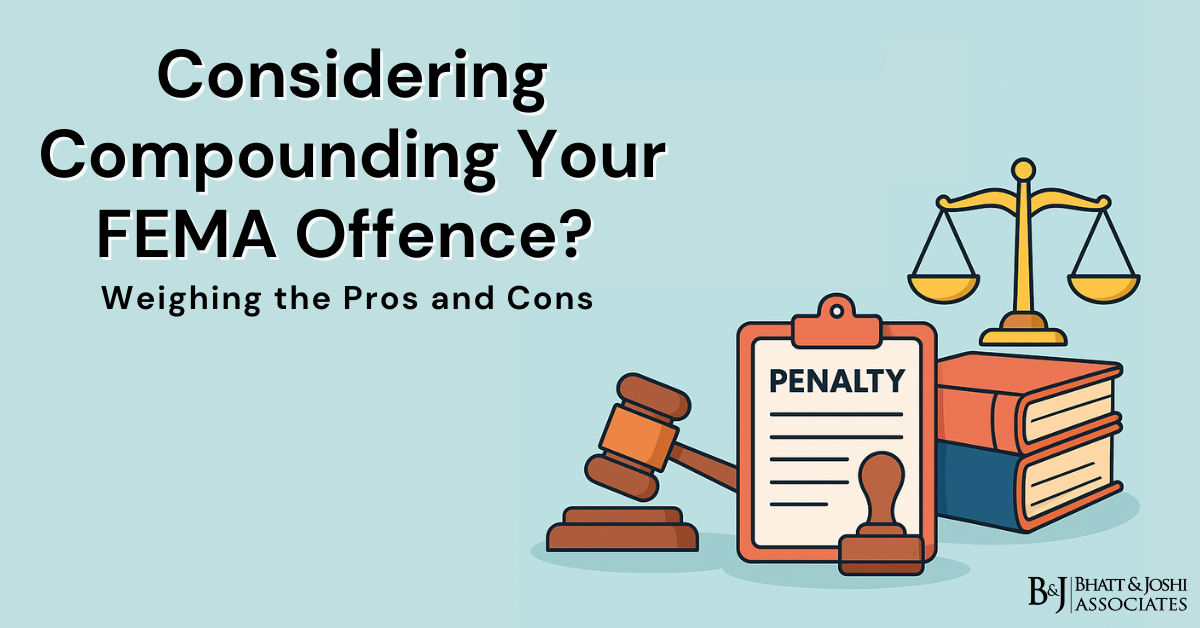
Introduction
The evolution of India’s corporate insolvency framework has created a complex interplay between traditional winding-up proceedings under the Companies Act, 2013, and the modern insolvency resolution process under the Insolvency and Bankruptcy Code, 2016 (IBC). This intersection raises critical questions about the maintainability of concurrent proceedings and the supremacy of legislative frameworks when dealing with financially distressed companies. The landmark judgment in A. Navinchandra Steels Private Limited v. SREI Equipment Finance Limited [1] has provided definitive clarity on this issue, establishing that insolvency proceedings under the IBC remain independent and unaffected by concurrent winding-up proceedings.
The transformation of India’s insolvency landscape represents a paradigm shift from the previously fragmented and inefficient system to a unified, creditor-in-control regime. This transformation has necessitated a careful examination of how traditional winding-up mechanisms interact with the new insolvency resolution framework, particularly when both proceedings target the same corporate entity simultaneously.
Legislative Framework and Regulatory Structure
The Companies Act, 2013: Winding Up Provisions
The Companies Act, 2013 governs the winding-up of companies through Chapter XX, which underwent significant modifications following the enactment of the IBC. Section 271 of the Companies Act, 2013 delineates the circumstances under which a company may be wound up by the Tribunal [2]. The provision states that “A company may, on a petition under section 272, be wound up by the Tribunal” under specific circumstances including when the company has passed a special resolution for winding up, when it has acted against national interests, when affairs have been conducted fraudulently, when there has been default in filing statutory returns for five consecutive years, or when it is just and equitable to wind up the company.
Significantly, the original provision for winding up due to “inability to pay debts” was removed from Section 271 following the enactment of the IBC. This removal represents a deliberate legislative choice to channel debt-related insolvency matters through the specialized framework of the IBC rather than the traditional winding-up mechanism.
The Insolvency and Bankruptcy Code, 2016: A Unified Framework
The IBC introduced a revolutionary approach to corporate insolvency resolution in India. The Code establishes a time-bound process for resolution, with the Corporate Insolvency Resolution Process (CIRP) designed to maximize asset values while providing a structured framework for creditor participation. Section 7 of the IBC empowers financial creditors to initiate CIRP proceedings when a corporate debtor defaults on debt obligations exceeding one lakh rupees.
The IBC’s approach fundamentally differs from traditional winding-up procedures by prioritizing corporate revival over liquidation. The Code treats liquidation as a last resort, to be pursued only when resolution efforts fail. This philosophy reflects the legislative intent to preserve economically viable businesses while ensuring efficient debt resolution.
The Non-Obstante Clause: Section 238 of the IBC
The supremacy of the IBC over other laws is established through Section 238, which contains a non-obstante clause stating that “The provisions of this Code shall have effect, notwithstanding anything inconsistent therewith contained in any other law for the time being in force or any instrument having effect by virtue of any such law” [3]. This provision ensures that the IBC prevails over conflicting provisions in other statutes, including the Companies Act, 2013.
The Supreme Court in Swiss Ribbons Pvt. Ltd. v. Union of India [4] emphasized that the IBC is a special statute dealing with corporate revival, while the Companies Act is a general statute dealing with all companies. The Court noted that the IBC’s non-obstante clause, contained in Section 238, makes it clear that in case of conflict, the IBC provisions will prevail.
The A. Navinchandra Steels Case: A Landmark Determination
Factual Background
The case of A. Navinchandra Steels Private Limited v. SREI Equipment Finance Limited arose from a complex scenario involving concurrent proceedings under both the Companies Act and the IBC [1]. A. Navinchandra Steels Private Limited, as an operational creditor, had filed a winding-up petition against M/s Shree Ram Urban Infrastructure Limited (SRUIL) before the Bombay High Court, which remained pending. Simultaneously, SREI Equipment Finance Limited filed a Section 7 application under the IBC before the NCLT, which was admitted on November 6, 2019.
Action Barter Private Limited, aggrieved by the NCLT’s admission of the Section 7 petition, filed an appeal before the NCLAT, arguing that a Section 7 application is not maintainable while winding-up proceedings are ongoing against the same debtor company. This contention formed the crux of the legal dispute that ultimately reached the Supreme Court.
Arguments Advanced by the Parties
The appellant argued that irreversible actions had been taken in the winding-up petition, making the Section 7 petition non-maintainable. They relied on the principle established in Action Ispat and Power Pvt. Ltd. v. Shyam Metalics and Energy Ltd. [5] and contended that Section 446 of the Companies Act, 1956 (equivalent to Section 279 of the Companies Act, 2013) prohibits the initiation of any suit or legal proceeding once a winding-up petition is admitted.
The respondent countered that Section 7 proceedings under the IBC are independent proceedings that may be initiated at any time, even after a winding-up order has been issued. They argued that the non-obstante clause in Section 238 of the IBC ensures that the IBC prevails over Section 446 of the Companies Act, 1956, and Section 279 of the Companies Act, 2013.
The Supreme Court’s Analysis
The Supreme Court undertook a comprehensive analysis of the relationship between the IBC and the Companies Act, examining several precedents to establish the legal framework governing concurrent proceedings. The Court referenced Swiss Ribbons (P) Ltd. v. Union of India [4], where it was observed that the IBC will prevail not only because it is a special statute but also because it contains a non-obstante provision in Section 238.
The Court also examined Allahabad Bank v. Canara Bank [6], which held that a special statute with a non-obstante clause will take precedence over a general statute in case of conflict. This principle was further reinforced by the Court’s analysis of State Industrial and Investment Corporation of Maharashtra Ltd. v. Maharashtra Tubes Ltd. [7], which established that when there is a conflict between two special statutes, the later statute will take precedence if it contains a clause giving it an overriding effect.
The Court’s Definitive Ruling
The Supreme Court delivered a definitive ruling that proceedings under Section 7 of the IBC are independent proceedings that stand by themselves. The Court held that “A petition either under Section 7 or Section 9 of the IBC is an independent proceeding which is unaffected by winding up proceedings that may be filed qua the same company” [1].
The Court emphasized that any “suppression” of winding-up proceedings would not affect the decision on a Section 7 petition, as it must be decided on its own merits based on the provisions of the IBC. The Court also noted that the discretionary jurisdiction under the fifth proviso to Section 434(1)(c) of the Companies Act, 2013 cannot prevail over the undoubted jurisdiction of the NCLT under the IBC once the parameters of Section 7 and other provisions of the IBC have been met.
Judicial Precedents and Legal Principles
The Swiss Ribbons Foundation
The constitutional validity of the IBC was established in Swiss Ribbons Pvt. Ltd. v. Union of India [4], where the Supreme Court upheld the Code’s provisions and emphasized its special status. The Court noted that the IBC is designed to deal with the revival of companies in financial distress, with liquidation being resorted to only when all attempts at revival fail. This fundamental principle underlies the Court’s approach to resolving conflicts between the IBC and other statutes.
Transfer of Proceedings: The Jaipur Metals Precedent
In Jaipur Metals & Electricals Employees Organization v. Jaipur Metals & Electricals Ltd. [8], the Supreme Court held that parties to winding-up proceedings pending before the High Court can file an application for transfer of such proceedings to the NCLT under the IBC. The Court noted that Section 238 of the Code would take precedence over Section 434 of the Companies Act in case of conflict between the provisions.
The Forech India Principle
The decision in Forech (India) Ltd. v. Edelweiss Assets Reconstruction Co. Ltd. [9] established that winding-up petitions can be transferred to the NCLT to be treated as IBC proceedings. The Court found that Section 7 or 9 of the IBC are independent proceedings to be decided in accordance with the provisions of the Code, reinforcing the principle of independence between different types of proceedings.
Resolution of Conflicts: The Duncans Industries Approach
In Duncans Industries Ltd. v. AJ Agrochem [10], the Supreme Court addressed the conflict between CIRP proceedings under Section 9 of the Code and winding-up proceedings under the Tea Act, 1953. The Court held that the IBC’s provisions would take precedence over the Tea Act in light of Section 238 of the Code, establishing a clear hierarchy of legal authority.
Practical Implications and Procedural Considerations
Stages of Winding-Up and IBC Applications
The interplay between winding-up and insolvency proceedings creates several practical scenarios that require careful consideration. Based on the established legal principles, applications under the IBC may be filed at different stages of winding-up proceedings:
When winding-up petitions are served on the respondent company but remain pending before the High Court without an order, IBC applications may be filed with the NCLT without requiring the High Court’s permission. This reflects the independent nature of IBC proceedings and the supremacy of the Code over traditional winding-up mechanisms.
If a winding-up order has been issued, an application under the IBC may still be filed with the NCLT, though prior permission from the relevant High Court may be required as a matter of procedural courtesy. This requirement does not stem from any legal impediment but rather from the practical need to coordinate between different judicial forums.
The Moratorium Effect
Section 14 of the IBC provides for a moratorium that prevents the initiation of new suits or proceedings against the corporate debtor once CIRP is initiated. This moratorium extends to winding-up petitions, effectively staying any ongoing winding-up proceedings. The moratorium continues from the date of admission of the application until the completion of the corporate insolvency resolution process.
Asset Preservation and Management
The appointment of an Interim Resolution Professional (IRP) under the IBC creates a framework for asset preservation and management that may conflict with the role of provisional liquidators in winding-up proceedings. The A. Navinchandra Steels case demonstrated how courts can address such conflicts by directing the transfer of assets and records from provisional liquidators to IRPs to ensure seamless continuation of the insolvency process.
Regulatory Coordination and Institutional Framework
The Role of the NCLT
The National Company Law Tribunal (NCLT) serves as the adjudicating authority for both winding-up proceedings under the Companies Act, 2013, and insolvency proceedings under the IBC. This dual jurisdiction creates opportunities for coordinated resolution of conflicts between concurrent proceedings. The NCLT’s expertise in corporate law matters positions it well to handle the complex interplay between different legal frameworks.
Creditor Rights and Protections
The IBC’s creditor-in-control regime provides enhanced protections for creditors compared to traditional winding-up proceedings. Financial creditors enjoy voting rights in the Committee of Creditors (CoC), while operational creditors have specific rights to initiate CIRP proceedings. These enhanced protections may influence creditor preferences for pursuing IBC proceedings over traditional winding-up mechanisms.
Information Utilities and Transparency
The IBC establishes Information Utilities (IUs) as repositories of financial information relating to corporate debtors. These utilities enhance transparency and provide creditors with access to relevant financial data for informed decision-making. The availability of such information supports the independent nature of IBC proceedings and reduces reliance on information that may be available in winding-up proceedings.
Contemporary Challenges and Future Considerations
Harmonization of Procedures
The coexistence of winding-up and insolvency proceedings requires careful harmonization to prevent forum shopping and ensure efficient resolution of corporate distress. The Supreme Court’s emphasis on the independent nature of IBC proceedings provides a framework for such harmonization, but practical implementation requires ongoing judicial and regulatory attention.
Cross-Border Implications
The increasing globalization of business operations creates scenarios where Indian companies may be subject to insolvency proceedings in multiple jurisdictions. The interplay between domestic winding-up and insolvency proceedings becomes more complex when international elements are involved, requiring careful consideration of conflict of laws principles.
Regulatory Evolution
The continuous evolution of India’s insolvency framework, including amendments to the IBC and related regulations, requires ongoing assessment of the interplay between different legal mechanisms. The Supreme Court’s jurisprudence provides a stable foundation, but new challenges may emerge as the framework matures.
Conclusion
The Supreme Court’s decision in A. Navinchandra Steels Private Limited v. SREI Equipment Finance Limited has provided definitive clarity on the interplay between insolvency and winding-up proceedings. The Court’s ruling that IBC proceedings are independent and unaffected by concurrent winding-up proceedings establishes a clear hierarchy of legal authority and provides certainty for creditors, corporate debtors, and legal practitioners.
The decision reinforces the supremacy of the IBC as a special statute designed to address corporate insolvency in a time-bound and efficient manner. The non-obstante clause in Section 238 ensures that the IBC’s provisions prevail over conflicting provisions in other statutes, including the Companies Act, 2013. This framework supports the legislative intent to prioritize corporate revival over liquidation while ensuring efficient debt resolution.
The practical implications of this decision extend beyond the specific facts of the case to provide a framework for resolving similar conflicts in the future. The emphasis on the independent nature of IBC proceedings ensures that creditors can pursue insolvency resolution without being constrained by concurrent winding-up proceedings, thereby enhancing the effectiveness of India’s insolvency framework.
As India’s insolvency regime continues to evolve, the principles established in this landmark decision will serve as a foundation for addressing new challenges and ensuring the continued effectiveness of the corporate insolvency resolution process. The decision represents a significant step forward in the development of a mature and efficient insolvency framework that serves the interests of all stakeholders while promoting economic growth and stability.
References
[1] A. Navinchandra Steels Private Limited v. SREI Equipment Finance Limited, (2021) 4 SCC 435. Available at: https://indiankanoon.org/doc/10385552/
[2] The Companies Act, 2013, Section 271. Available at: https://ibclaw.in/section-271-of-the-companies-act-2013-circumstances-in-which-company-may-be-wound-up-by-tribunal/
[3] The Insolvency and Bankruptcy Code, 2016, Section 238. Available at: https://ibclaw.in/section-238-provisions-of-this-code-to-override-other-laws/
[4] Swiss Ribbons Pvt. Ltd. v. Union of India, (2019) 4 SCC 17. Available at: https://indiankanoon.org/doc/17372683/
[5] Action Ispat and Power Pvt. Ltd. v. Shyam Metalics and Energy Ltd., 2020 SCC OnLine SC 1025
[6] Allahabad Bank v. Canara Bank, (2000) 4 SCC 406
[7] State Industrial and Investment Corporation of Maharashtra Ltd. v. Maharashtra Tubes Ltd., (1986) 2 SCC 152
[8] Jaipur Metals & Electricals Employees Organization v. Jaipur Metals & Electricals Ltd., (2020) 4 SCC 78
[9] Forech (India) Ltd. v. Edelweiss Assets Reconstruction Co. Ltd., (2019) 18 SCC 549
[10] Duncans Industries Ltd. v. AJ Agrochem, Civil Appeal No. 5120 of 2019. Available at: https://indiacorplaw.in/2019/10/19/understanding-scope-section-238-overriding-nature-ibc/
[11] Macquarie Bank Ltd. v. Shilpi Cable Technologies Ltd., (2018) 2 SCC 674
[12] Innoventive Industries Ltd. v. ICICI Bank and Anr., (2018) 1 SCC 407
PDF Links to Full Judgement
- https://bhattandjoshiassociates.s3.ap-south-1.amazonaws.com/judgements/A_Navinchandra_Steels_Pvt_Ltd_vs_Srei_Equipment_Finance_Limited_on_1_March_2021.PDF
- https://bhattandjoshiassociates.s3.ap-south-1.amazonaws.com/judgements/the_insolvency_and_bankruptcy_code,_2016 (3).pdf
- https://bhattandjoshiassociates.s3.ap-south-1.amazonaws.com/judgements/A2013-18 (4).pdf
- https://bhattandjoshiassociates.s3.ap-south-1.amazonaws.com/judgements/Swiss_Ribbons_Pvt_Ltd_vs_Union_Of_India_on_25_January_2019 (2).PDF
- https://bhattandjoshiassociates.s3.ap-south-1.amazonaws.com/judgements/Action_Ispat_And_Power_Pvt_Ltd_vs_Shyam_Metalics_And_Energy_Limited_on_15_December_2020.PDF
- https://bhattandjoshiassociates.s3.ap-south-1.amazonaws.com/judgements/Maharashtra_Tubes_Ltd_vs_State_Industrial_And_Investment_on_29_January_1993.PDF
- https://bhattandjoshiassociates.s3.ap-south-1.amazonaws.com/judgements/Jaipur_Metals_And_Electricals_vs_Jaipur_Metals_And_Electricals_Ltd_Thru_on_12_December_2018.PDF
- https://bhattandjoshiassociates.s3.ap-south-1.amazonaws.com/judgements/In the matter of Forech India Ltd Vs Edelweiss Assets Reconstruction Co. Ltd Civil Appeal No. 818-2018_2019-01-26 10_49_58.pdf
- https://bhattandjoshiassociates.s3.ap-south-1.amazonaws.com/judgements/Duncans_Industries_Ltd_vs_A_J_Agrochem_on_4_October_2019.PDF
- https://bhattandjoshiassociates.s3.ap-south-1.amazonaws.com/judgements/Macquarie_Bank_Limited_vs_Shilpi_Cable_Technologies_Ltd_on_15_December_2017.PDF
Written By and Authorized by : Vishal Davda













